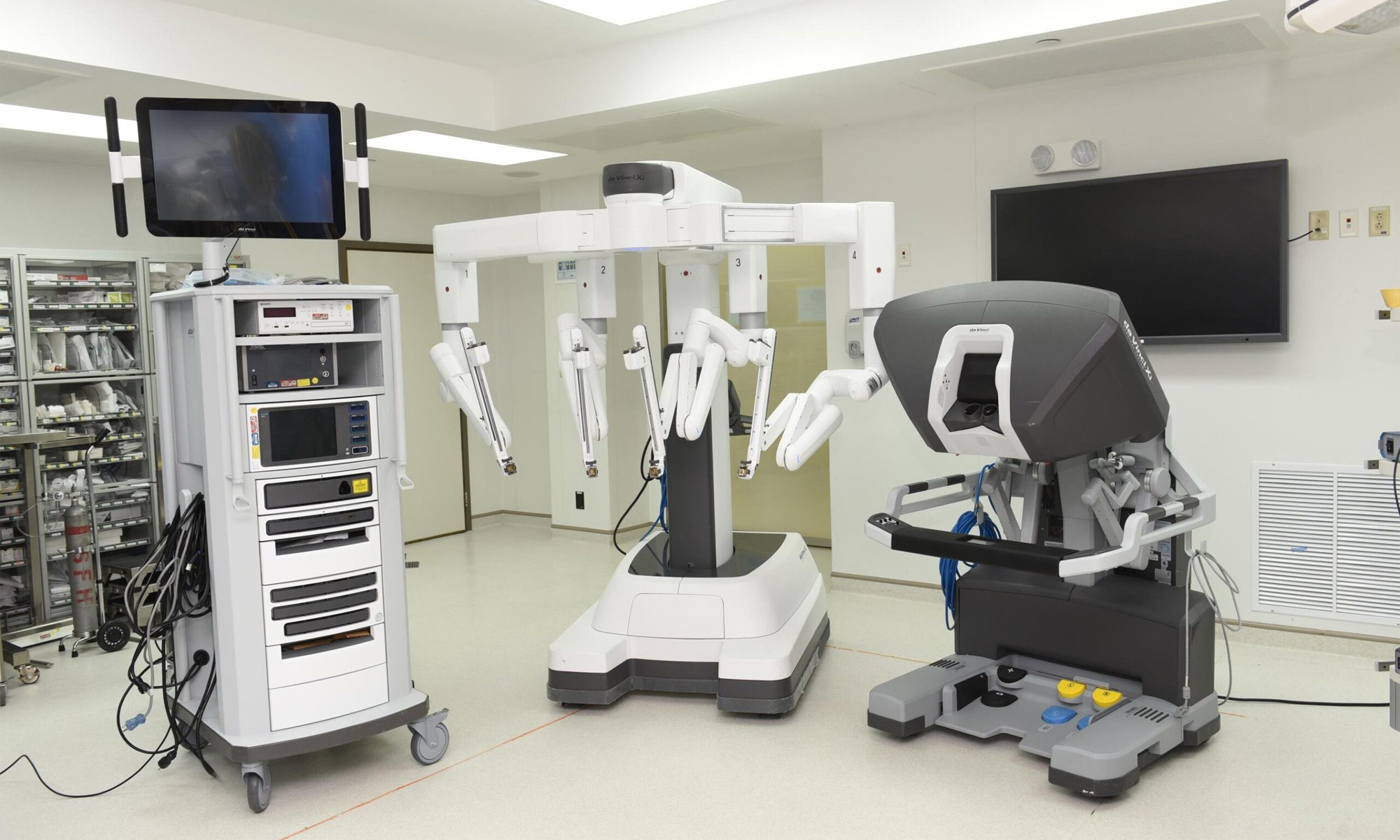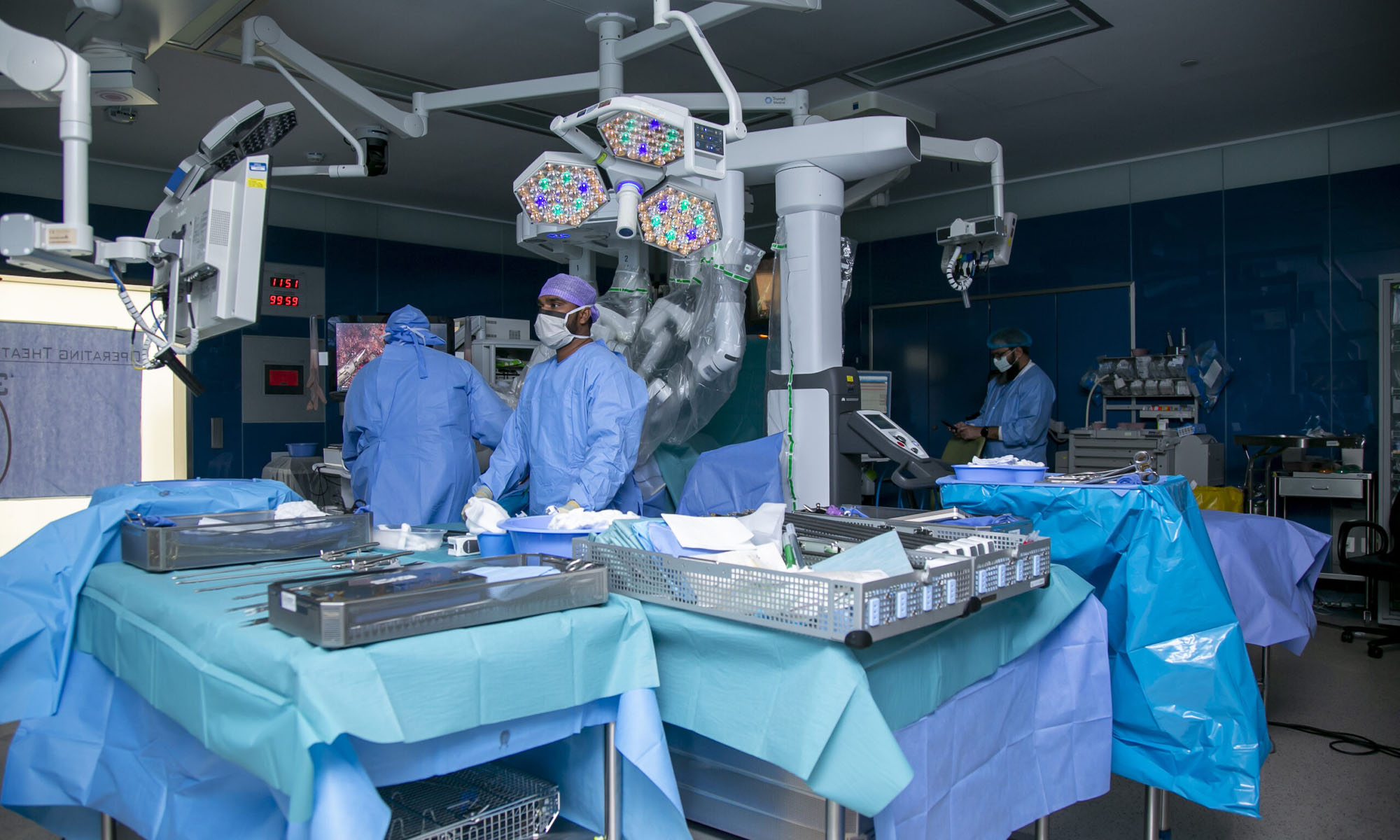News
Saudi Hospital Performs First Fully Robotic Liver Transplant
The groundbreaking surgery paves the way for future medical innovation.

King Faisal Specialist Hospital & Research Center’s (KFSH&RC) Organ Transplant Center of Excellence (OTCoE) in Riyadh, KSA, has successfully completed a groundbreaking surgery — a liver transplant performed entirely by robots.
The donor recipient, a 66-year-old Saudi male battling non-alcoholic liver cirrhosis and hepatocellular carcinoma, was treated on September 6th. The man is the first in a long line of future patients who will benefit from fully robotic transplants at the Saudi facility.

While other surgical establishments have experimented with minimally invasive liver transplants using hybrid robotic techniques, KFSH&RC is the only one to successfully perform a fully robotic liver transplant. The high-tech machinery enables surgeons to make smaller incisions, allowing for faster recoveries and radically reduced rates of post-op complications and infections.
Dr. Dieter Broering, Executive Director of the Organ Transplant Center of Excellence at KFSH&RC, noted: “With this remarkable feat, we at KFSH&RC reaffirm our commitment to pushing the boundaries of medical innovation and enhancing the quality of healthcare services offered to patients worldwide. The successful implementation of fully robotic liver transplants marks a pivotal moment in the history of organ transplantation and firmly positions KFSH&RC as a world-leading center in this field”.
Also Read: Google Is Developing An AI Cancer-Spotting Microscope
The KFSH&RC Robotic Surgery Program and its Da Vinci Xi robots now operate across several surgical departments:
- Gynecology, including operating on uterine cancers, benign hysterectomies, and myomectomies.
- Urology, for the treatment of kidney, ureter, bladder, and prostate tumors.
- Neurology, where electrodes are implanted into the brains of patients suffering refractory epilepsy and hemispherectomies.
KFSH&RC is now recognized as a leading Training Center for robotic transplants, opening the doors to collaborations with other medical institutions and driving global progress in minimally invasive surgeries.
News
Google Releases Veo 2 AI Video Tool To MENA Users
The state-of-the-art video generation model is now available in Gemini, offering realistic AI-generated videos with better physics, motion, and detail.

Starting today, users of Gemini Advanced in the MENA region — and globally — can tap into Veo 2, Google’s next-generation video model.
Originally unveiled in 2024, Veo 2 has now been fully integrated into Gemini, supporting multiple languages including Arabic and English. The rollout now brings Google’s most advanced video AI directly into the hands of everyday users.
Veo 2 builds on the foundations of its predecessor with a more sophisticated understanding of the physical world. It’s designed to produce high-fidelity video content with cinematic detail, realistic motion, and greater visual consistency across a wide range of subjects and styles. Whether recreating natural landscapes, human interactions, or stylized environments, the model is capable of interpreting and translating written prompts into eight-second 720p videos that feel almost handcrafted.
Users can generate content directly through the Gemini platform — either via the web or mobile apps. The experience is pretty straightforward: users enter a text-based prompt, and Veo 2 returns a video in 16:9 landscape format, delivered as an MP4 file. These aren’t just generic clips — they can reflect creative, abstract, or highly specific scenarios, making the tool especially useful for content creators, marketers, or anyone experimenting with visual storytelling.
Also Read: Getting Started With Google Gemini: A Beginner’s Guide
To ensure transparency, each video is embedded with SynthID — a digital watermark developed by Google’s DeepMind. The watermark is invisible to the human eye but persists across editing, compression, and sharing. It identifies the video as AI-generated, addressing concerns around misinformation and media authenticity.
While Veo 2 is still in its early phases of public rollout, the technology is part of a broader push by Google to democratize advanced AI tools. With text-to-image, code generation, and now video creation integrated into Gemini, Google is positioning the platform as a full-spectrum creative assistant.
Access to Veo 2 starts today and will continue expanding in the coming weeks. Interested users can try it out at gemini.google.com or through the Gemini app on Android and iOS.


















